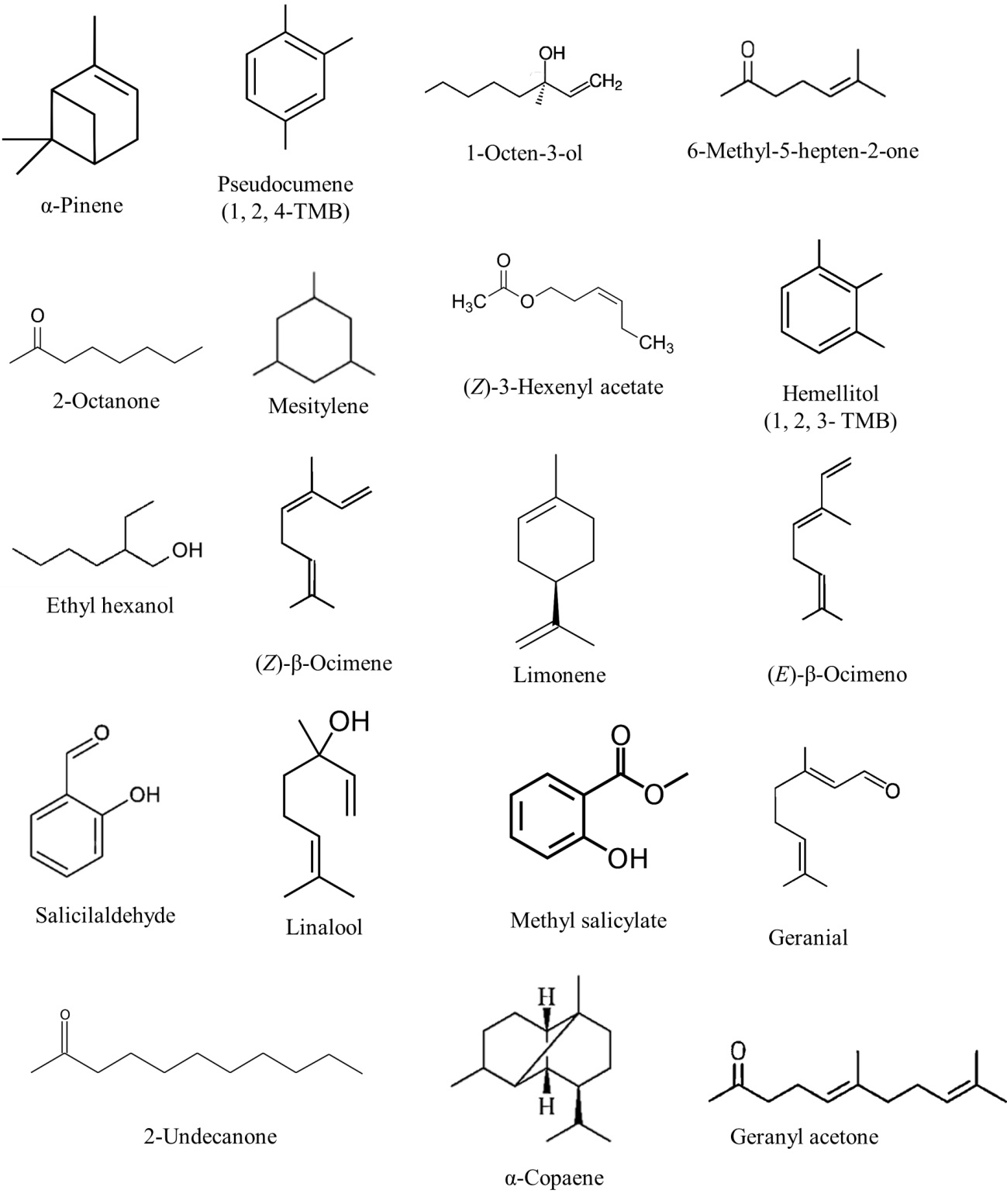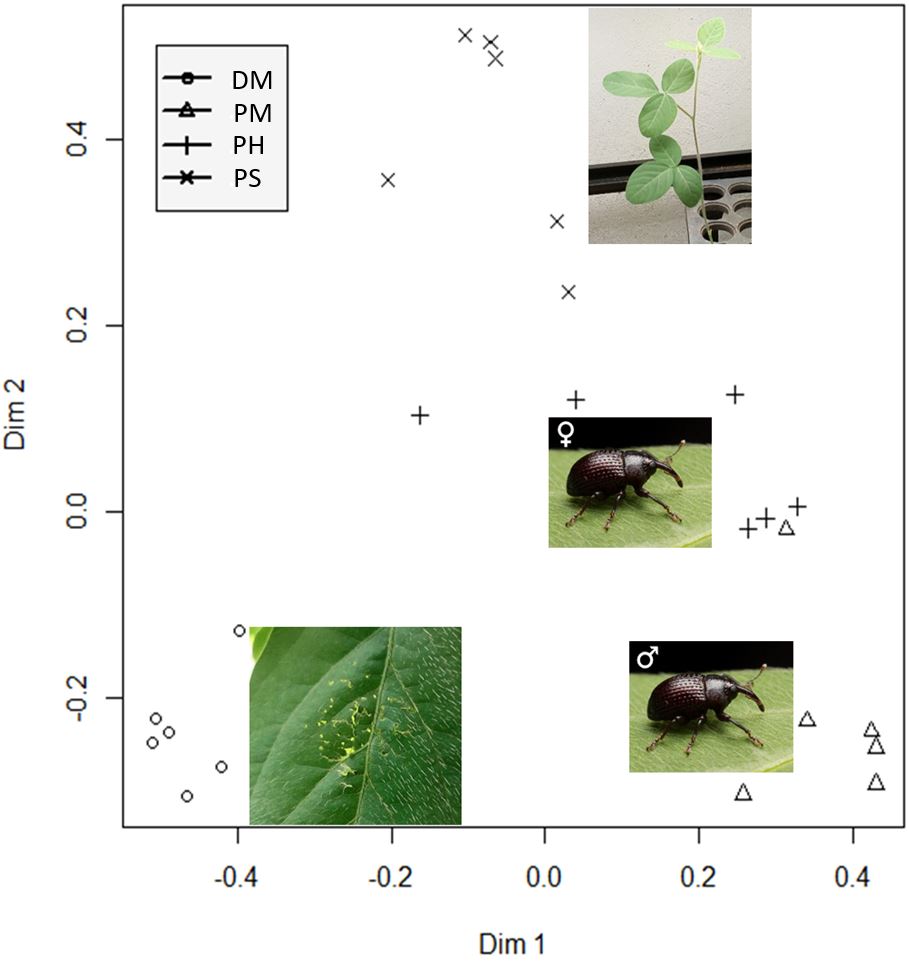Abstract
The present study analyzed the volatile compounds emitted by Glycine max (cv. FT-Cristalina-RCH) soybean plants: healthy plants and plants damaged mechanically or by the Mexican soybean weevil Rhyssomatus nigerrimus. The SPME method was used to compare the volatile profile of soybean plants in four different conditions. The volatile profile of G. max plants infested by R. nigerrimus was qualitatively and quantitatively different from that of healthy and mechanically damaged plants. Emission of 59 compounds was detected in the four treatments. Of these compounds, 19 were identified by comparison of the Kovats index, mass spectrum and retention times with those of synthetic standards. An increase in concentration of the volatiles (Z)-3-hexenyl acetate and the compound 1-octen-3-ol was observed when the soybean plants were mechanically damaged. The compounds mostly produced by the soybean plant during infestation by male and female R. nigerrimus were 1-octen-3-ol, 6-methyl-5-hepten-2-one, (E)-β-ocimene, salicylaldehyde, unknown 10, linalool, methyl salicylate, (Z)-8-dodecenyl acetate (ester 5), ketone 2 and geranyl acetone. Behavioral effects of the identified compounds during the insect-plant interaction and their conspecifics are discussed.
Keywords:
SPME; limonene; methyl salicylate; linalool; (E)-β-ocimene

 Thumbnail
Thumbnail
 Thumbnail
Thumbnail
 Thumbnail
Thumbnail
 Thumbnail
Thumbnail
 Thumbnail
Thumbnail




